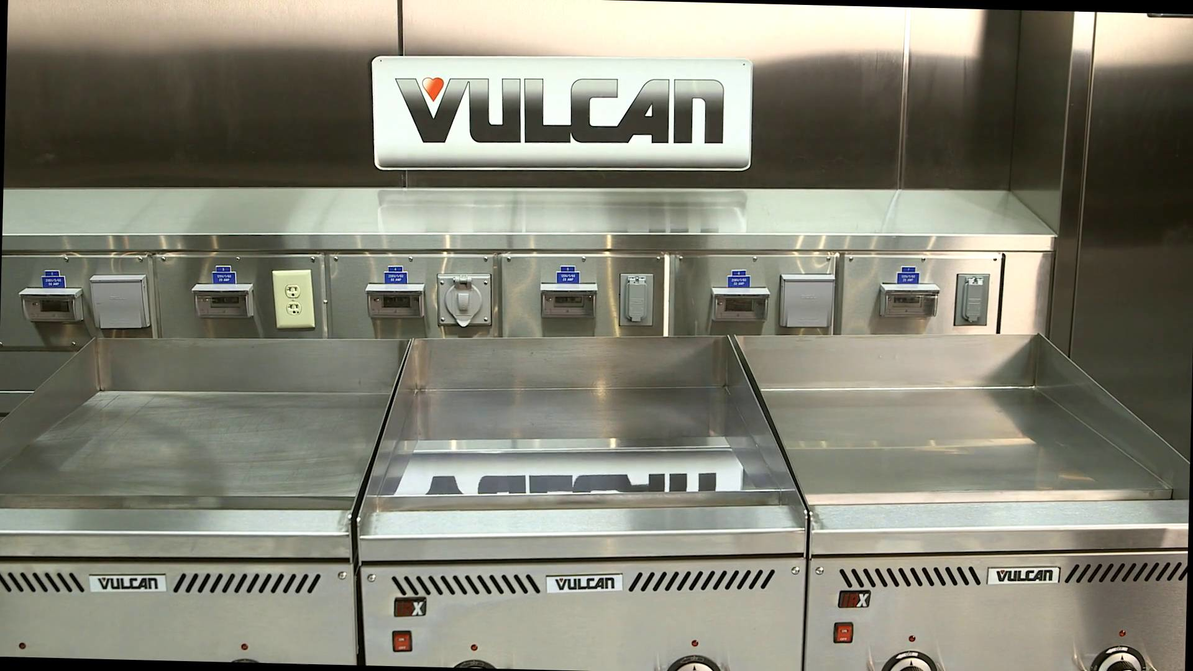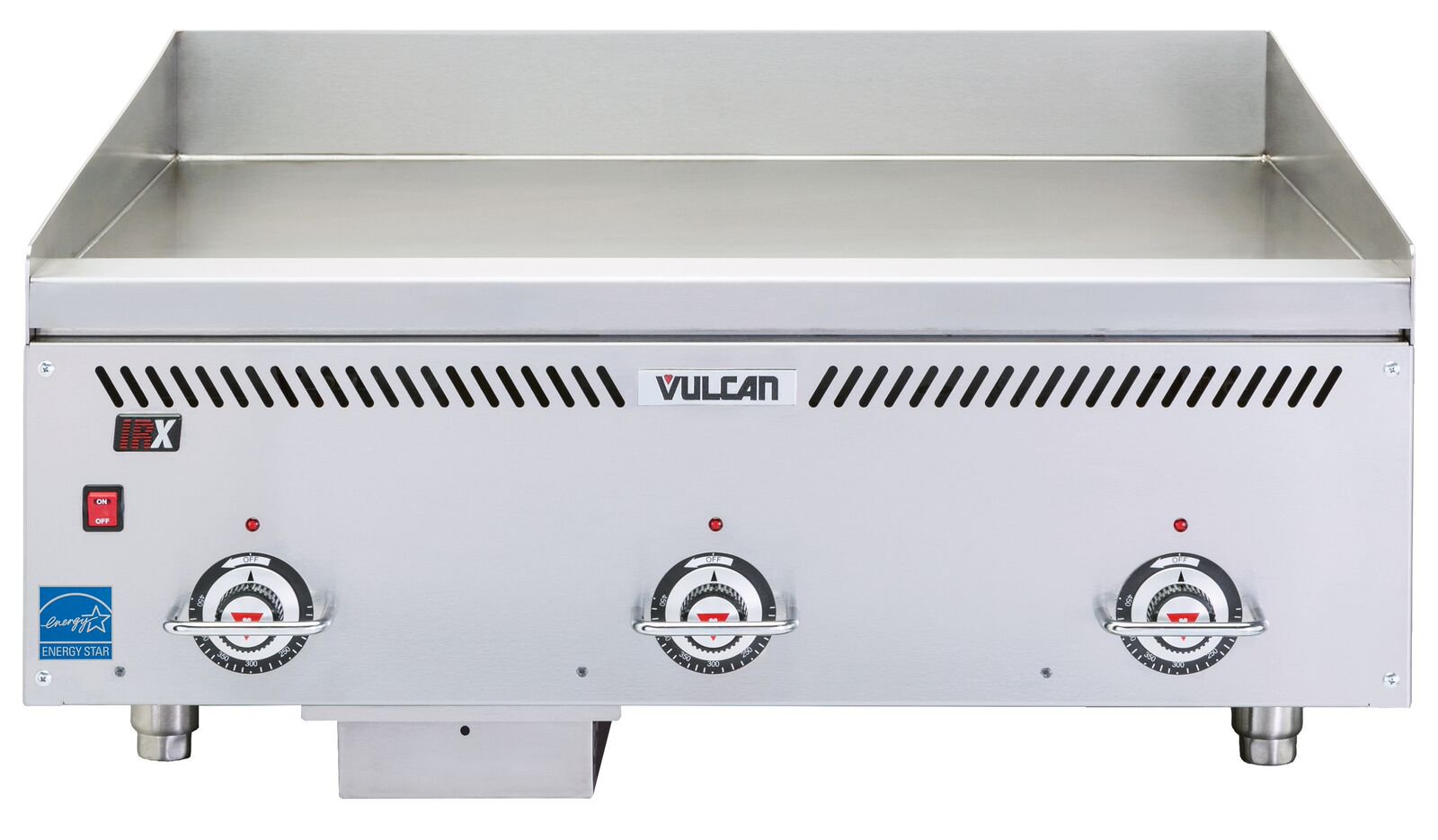Product Maintenance | Cleaning Your Vulcan VCCG Series Griddle
To keep your Vulcan Custom Chain Griddle looking and performing its best, daily cleaning is a must. Carbonized grease can inhibit the transfer of heat from the griddle's surface to the food, leaving you with unevenly prepared foods and a loss of cooking efficiency. Watch along to get all the info you need to know for cleaning the VCCG series griddles, including specialized care for steel, chrome, and Vulcan's exclusive rapid recovery composite plate griddle materials.
Transcript
In this video, we will demonstrate how to clean the three different griddle plate materials available with Vulcan's innovative custom chain griddle: steel, chrome, and Vulcan's exclusive rapid recovery composite plate. It is important to clean your griddle daily as it will look and perform better. Carbonized grease on the surface hinders the transfer of heat from the griddle surface to the food resulting in spotty browning and loss of cooking efficiency. Plus, it can affect the appearance and taste of the food.
Vulcan Custom Chain Griddles
Cool bull nose design keeps the front rail cool to the touch at all times.
Check it outSteel plates are the most labor-intensive to clean and require a brick or special detergent. Throughout service, clean the griddle cooking surface regularly with a griddle scraper while the griddle is still on. At the end of service, allow griddle to cool down to 300 degrees. Apply room temperature water and clean with a griddle scraper to remove debris. Next, apply oil and use a griddle brick on the surface as necessary. Rub with the grain of the metal while the griddle is still warm. A detergent may be used on the plate surface but be sure the detergent is thoroughly removed by flushing with room temperature water. A putty knife may also be used to remove debris in hard-to-reach places.
Chrome plates require special tools such as food-safe polish, a bladed scraper, and a Palmetto brush. Throughout service, clean the griddle cooking surface regularly with a bladed griddle scraper while the griddle is still on. At the end of service, allow griddle to cool down to 300 degrees. Apply room temperature water and brush with a Palmetto brush, pulling all debris to the front grease trough. Once all debris is removed, cover the plate with a non-abrasive food-safe polish and wipe with a clean dry cloth. Once this process is complete, use a clean damp cloth to ensure all polish has been removed.
Vulcan's exclusive rapid recovery griddle plate is a composite material engineered to provide even temperature across the griddle plate while also being the easiest material to clean and maintain. No costly cleaners and no special tools needed. Throughout service, clean the griddle cooking service regularly with a griddle scraper while the griddle is still on. At the end of service, allow griddle to cool down to 300 degrees Fahrenheit. Apply room temperature water mixed with a mild detergent and clean with a non-abrasive heat-resistant griddle pad. Be sure the detergent is thoroughly removed by flushing with room temperature water and squeegee clean.
A few final maintenance tips for your VCCG griddle. Throughout service, wipe down the backsplash inside and outside of the side splashes in the front of the griddle and empty the grease drawer as needed. At a minimum, empty and wipe out the grease drawer at the end of service. After each cleaning, we recommend seasoning your griddle. Simply heat the griddle to a low temperature between 300 to 350 degrees Fahrenheit, and apply a small amount of cooking oil. Use a soft cloth to spread the oil over the griddle surface to create a thin film. Wipe off excess oil with a cloth. Lastly refrain from using ice to cool down your griddle as it can cause thermal shock. Always use room temperature water. For more information on operating and cleaning your VCCG griddle, refer to the operation manual on the Vulcan website.




